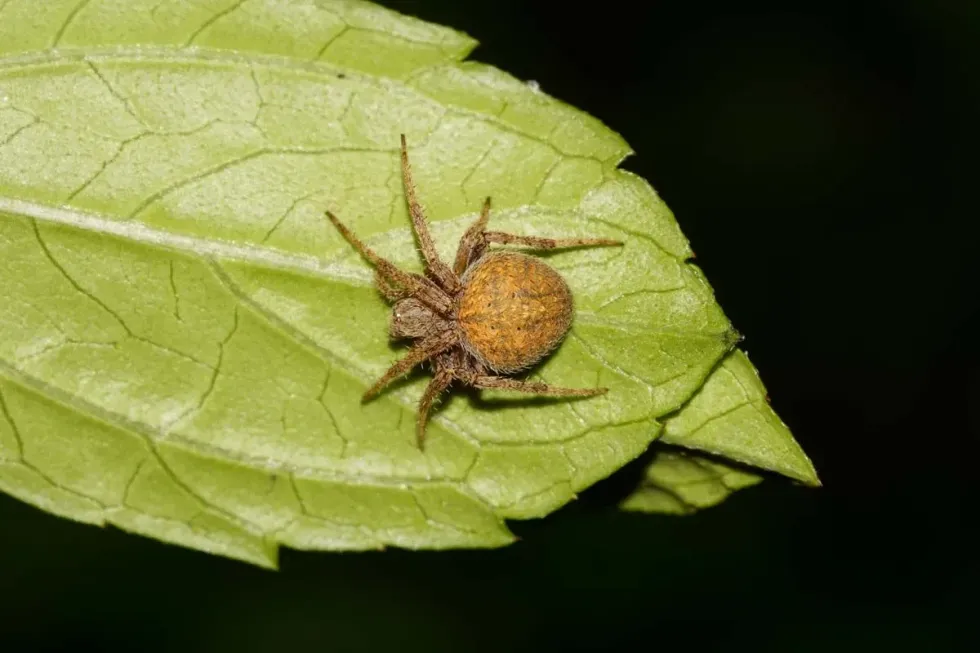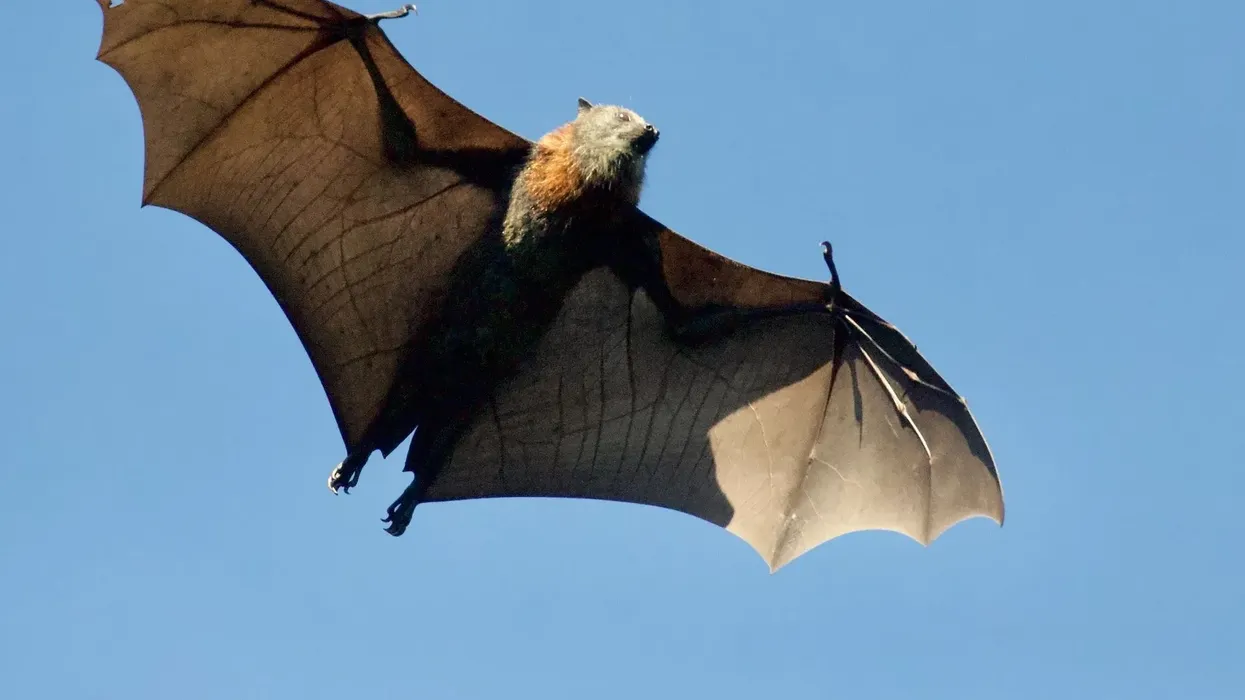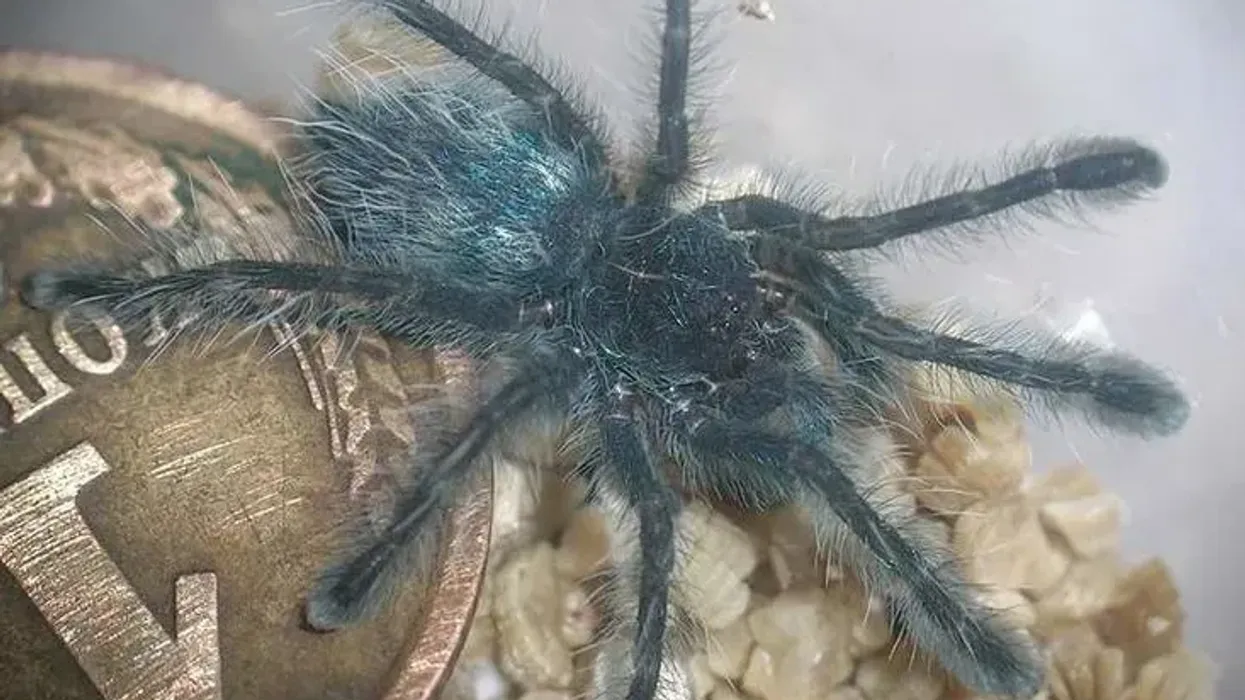Spotted orb-weavers, whose scientific name is Neoscona crucifera belong to the Neoscona genus and the Araneidae family. They are a species of orb-weaving spiders and are often also known as a Hentz orbweaver or a barn spider.
They are nocturnal in nature and make distinctive silk webs on which they catch their prey. Female spotted orb-weavers sometimes show cannibalism behavior and even eat males after mating like many other orb-weavers! Neither female orb-weavers nor males are likely to live through the winter.
Their eggs hatch in spring and spiderlings then feed and grow into adult spiders by the summer. Their diet includes small insects and other spiders.
Spotted orb-weavers have hairy bodies including their abdomen and legs, which can give them a slightly scary look, but they are harmless. Their habitat includes grassy fields, households, open forests, and bushy areas in places like Florida, Maine, and Minnesota in the United States, and Mexico.
Read on to know more about spotted orb-weavers, and if you like this article, then check out our guide to the southern house spider and the green lynx spider too.
Spotted Orb-Weaver Interesting Facts
What type of animal is a spotted orb-weaver?
The spotted orb-weaver (Neoscona crucifera) is a kind of spider that belongs to the family Araneidae.
What class of animal does a spotted orb-weaver belong to?
The spotted orb-weaver (Neoscona crucifera) belongs to the genus Neoscona, family Araneidae, and class Arachnida of animals.
How many spotted orb-weavers are there in the world?
The exact population of this species of insects is not known. They breed in large amounts though, so we can certainly assume that their population is not at risk right now.
Where does a spotted orb-weaver live?
Spotted orb-weavers are mainly found in North America, mainly in the United States and Mexico. In the United States, they can be seen in Arizona, Minnesota, Florida, and Maine. They are pretty common in these areas.
What is a spotted orb-weaver's habitat?
This species of spiders can be found in grassy fields, bushy areas, open forests, buildings, and on fence posts. They build webs wherever they find an abundance of enough food. Plenty of them can also be seen around the rooftops and walls of buildings and barn houses.
Who do spotted orb-weavers live with?
Most orb-weaver spiders are solitary in nature, so we can assume that spotted orb-weavers are also solitary.
How long does a spotted orb-weaver live?
These spiders don't live for long. The spotted orb-weaver lifespan is only about 12 months.
How do they reproduce?
The breeding season of spotted orb-weavers occurs in the summer. Orb-weaver spiders release pheromones to attract mates, and after mating, females eat the males!
Females then lay eggs in a spotted orb-weaver egg sac made from silk. These egg sacs include almost a thousand eggs. Adult females don't live to see the next winter, but the eggs hatch in spring, and the spiderlings survive on their own.
What is their conservation status?
The conservation status of spotted orb-weavers is Not Listed under the International Union for Conservation of Nature's Red List. These spiders don't face any great threats currently and breed in large numbers.
Spotted Orb-Weaver Fun Facts
What do spotted orb-weavers look like?
Spotted orb-weavers (Neoscona crucifera) are comparatively large in size. There are many spiders that are all called spotted orb-weavers, like the red-spotted orb-weaver, the brown-spotted orb-weaver, the four-spotted orb-weaver, and the western spotted orb-weaver spider.
These all have only a few differences by which you can tell them apart. Spotted orb-weavers (Neoscona crucifera) have a triangular-oval-shaped abdomen that is mostly grayish-brown in color. The rest of their body may be orange-brown or rusty colored.
They have a brown pattern on their abdomen and a greenish-brown or black pattern on other parts of their body. Their legs are grayish brown with brown markings on them and they also have hair throughout their bodies including on their abdomen and legs.

How cute are they?
Not everyone likes spiders but they can be cute at times. Spotted orb-weavers have a hairy body that can give them a scary look, but they are not harmful to humans.
Spotted orb-weaver behavior is also not aggressive, which can help their case in terms of cuteness and they spin wonderful webs that look like a wheel or an 'orb'. These amazing webs are the most special thing about them and make them quite cute as spiders go!
How do they communicate?
These spiders communicate through chemical, visual, and tactile means. They spot their prey using their eyesight and release pheromones to attract mates.
These spiders have a hairy body with many tactile hairs, by which they sense vibrations around them. These tactile hairs help them get a sense of direction too, so they can understand the direction and distance of their predators and prey.
How big is a spotted orb-weaver?
The Neoscona crucifera is the largest of the spotted orb-weavers. This giant spotted orb-weaver size on average is about 0.5 in (1.3 cm). More generally, the largest orb-weavers are golden orb-weavers, and they are three times bigger than spotted orb-weavers, as they are about 1.5 in (3.8 cm) in size.
How fast can a spotted orb-weaver run?
The exact speed at which these spiders move is not known, but they move at a moderate speed.
How much does a spotted orb-weaver weigh?
The exact weight of these species is not known.
What are their male and female names of the species?
There are no specific names for males or females of the species.
What would you call a baby spotted orb-weaver?
A baby of a spotted orb-weaver is called a spiderling.
What do they eat?
The diet of spotted orb-weaver spiders includes small insects, such as crane flies, moths, and other spiders of their own species. They don't go to find their prey, instead, they construct sticky webs, in which their prey gets stuck.
These spiders then bite their prey and eat them later on.
These spiders are nocturnal in nature, so they construct their webs at dusk and catch and eat their prey in the night. When dawn comes, they eat whatever is left on the web from last night, and the next day they build a new web again to catch new prey.
Are they dangerous?
The spiders are not very dangerous and they are not aggressive either, but if they feel threatened in some way, they will reciprocate. Even if they bite, it won't do much harm, as they are not harmful to humans and they cannot kill you.
A spotted orb-weaver bite may look red and slightly swollen. They are also not poisonous to dogs and there is no need for humans to kill these spiders if they appear in our homes.
Would they make a good pet?
Some spiders make good pets, but spotted orb-weavers are not one of them. Golden orb-weavers are kept as pets at times, but spotted orb-weavers are wild spiders.
They don't go foraging for food so, if kept as pets, they would need to be given food. Creating a perfect environment for them would be difficult too, so it's advisable to not keep them as pets.
Did you know...
Species of orb weaving spiders are easy to recognize by their spiral wheel webs. Spotted orb-weavers (Neoscona crucifera) can be further identified by their grayish-brown abdomens and the brown markings on their bodies.
To recognize any male spider, including the spotted orb-weaver male from the spotted orb-weaver female, you need to look at the appendages of spiders near their mouthparts. Appendages of males are always larger than those of females.
What is special about spotted orb-weaver webs?
Spotted orb-weavers are one of the most advanced species of spiders who spin wonderful webs that look like a wheel or an 'orb'. These amazing webs are the most special thing about them. Spotted orb-weavers are so skilled at making these webs that they can catch any kind of prey whether they are flying ones or jumping prey.
What do female spotted orb-weavers do after mating?
A female spotted orb-weaver lays its eggs in an egg sac which it makes out of silk. It waits for the eggs to hatch, protecting the egg sacs all the time, and then eats the male that it mated with! Females don't survive the winter after mating.
Here at Kidadl, we have carefully created lots of interesting family-friendly animal facts for everyone to discover! Learn more about some other insects including the parson spider, or the rabid wolf spider.
You can even occupy yourself at home by drawing one on our Spotted orb-weaver coloring pages.










